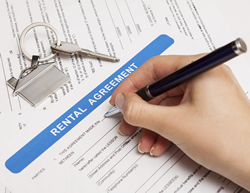 Consumer Protection has issued advice on how the security bond paid at the start of a leased property should be distributed between tenant and landlord when the tenancy ends.
Consumer Protection has issued advice on how the security bond paid at the start of a leased property should be distributed between tenant and landlord when the tenancy ends.
Commissioner for Consumer Protection, Trish Blake said tenants might be relying on getting back the money to help with finding a new place to live, while landlords might need some — or all — of the funds to cover damage or cleaning costs.
She noted that last year only 36 per cent of tenants received all their security bond back.
“New figures from the Bonds Administration Branch at Consumer Protection show a portion of the funds was paid out to around 51 per cent of tenants, while 12 per cent relinquished all of the money,” Ms Blake said.
“In other cases, neither the landlord nor tenant had laid claim to what was rightfully theirs, as the $4.15 million in unclaimed funds sitting with the Bonds Administrator and Department of Treasury currently shows,” she said.
She said that while this unclaimed sum related to tenancies that had ended since 1990, Consumer Protection urged tenants and landlords, both past and present, to conduct a simple check on the Service WA app or the Treasury website to check whether they were owed any of the money.
“When it comes to getting your own bond back, the property condition report (PCR) signed by all parties at the beginning of the tenancy is a key document that can be used to determine what damage, if any, occurred throughout the tenancy in case there is any disagreement,” Ms Blake said.
“For this reason, we also recommend tenants take photos of the property when they move in and include those photos with the PCR when it is returned to the landlord or agent.”
She said all bonds must be lodged by the landlord or property manager with the Bond Administrator within 14 days of receiving the money, meaning landlords had no right to keep any amount paid as a security bond, unless agreed by the tenant or stipulated in a court order.









